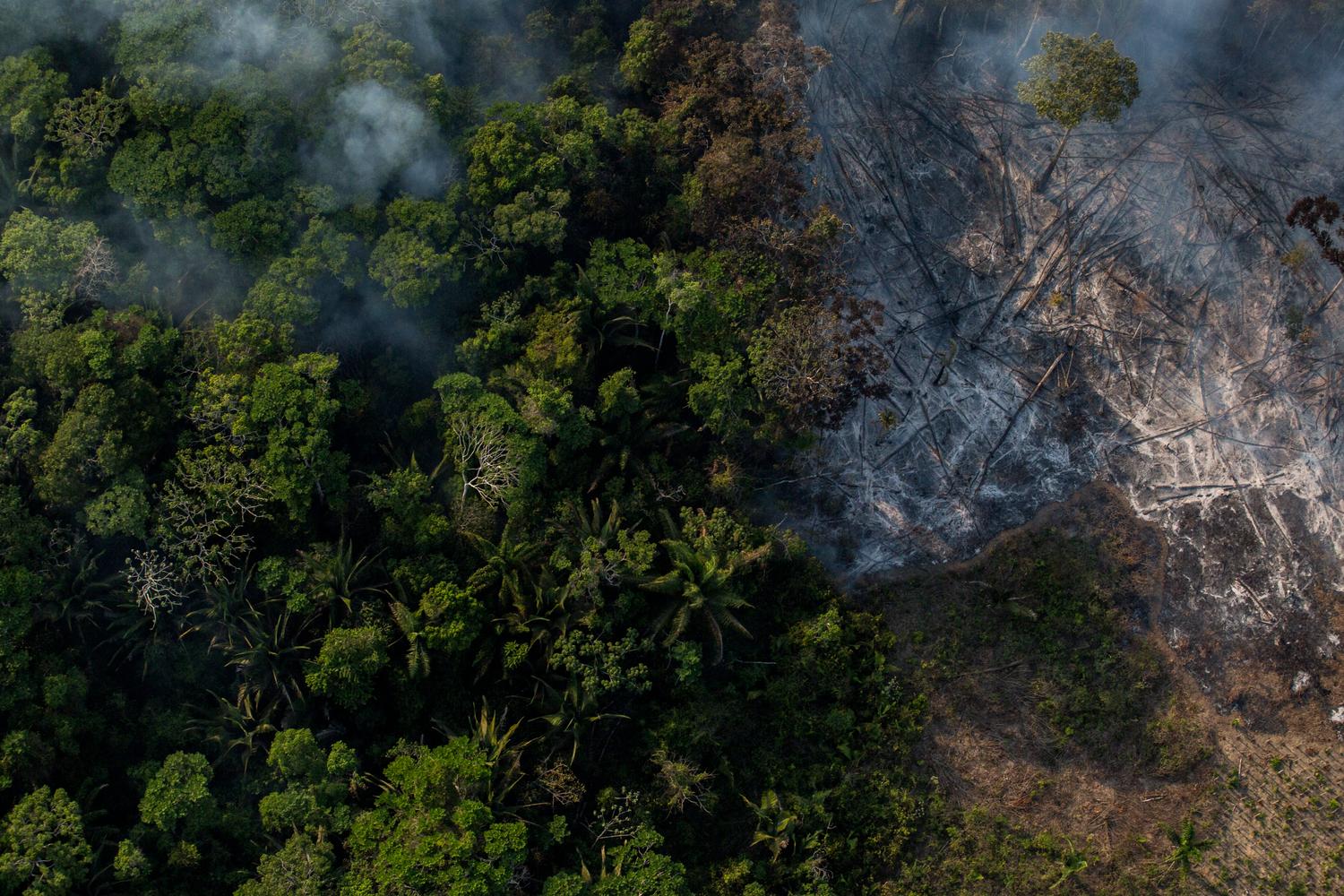A year after unprecedented fires ravaged the Amazon, the latest data indicate the world’s largest rainforest faces an even higher risk of fires in 2020.
Drier than average conditions — exacerbated by climate change — and the COVID-19 pandemic have created what one expert calls “a perfect storm.”
“Predicting the fire season is not straightforward,” said Karyn Tabor, senior director of ecological monitoring at Conservation International, in a recent statement. “Fire season in the Amazon is influenced by ecological, climatic, social, cultural and economic factors … from sea surface temperatures that influence rainfall in South America, to commodity-driven deforestation and the COVID-19 pandemic.”
With insight from satellite data and reports from the field, Tabor and her team project a particularly intense — and potentially devastating — fire season across the region.
Deforestation, COVID-19 and fires
Deforestation in the tropics has surged since COVID-19 restrictions went into effect, according to recent reports from Conservation International field offices. Evidence suggests that the majority of these activities were enabled by weakened enforcement efforts that people exploited — some driven by desperation for food and income, others by profit.
Regardless of the motivation, the destruction of these tropical forests could have devastating consequences for countries across the Amazon Basin as fire season approaches.
Data derived from Firecast — a tool developed by Conservation International to track and predict forest fires in tropical countries — found that more of the Amazon fires in 2019 occurred in places that had been completely or partially deforested, which dried these areas and enabled faster burning.
“There is no doubt that climate change and deforestation are intensifying fire seasons in the Amazon and elsewhere in ways that negatively impact livelihoods and the environment,” Tabor said.
Rather than decreasing deforestation in preparation for this fire season, however, many governments are actually easing anti-deforestation laws amid the pandemic, she added.
“Some governments have used widespread focus on the pandemic to quietly roll back environmental protections designed to prevent deforestation which in turn fuels the capacity for future fires to take hold.”
‘Uncontrolled spread’
Burning land to clear space for agriculture is a common farming practice in the Amazon. As climate change accelerates and conditions become drier, however, these small, controlled burns can too easily escalate into uncontrollable infernos, Tabor said.
“We are seeing warmer than average Atlantic sea surface temperatures just north of the equator, which usually indicates a drier-than-average fire season in the western Amazon,” she explained. “Drier conditions do not mean there will be more fires in number but indicate that there will be more area burned due to fire size and the increased risk of uncontrolled spread."
These drier conditions stand to have the greatest impact on Peru and Bolivia during the 2020 fire season, as well as the Brazilian Amazon states of Amazonas and Maranhão, according to Firecast and data from NASA.
Driven by climate change, high temperatures mixed with drier conditions could have potentially dire consequences for the health and livelihoods of people who live in these areas, especially Indigenous peoples.
“As we approach the time for annual agricultural burning, the monitoring and tracking risk of uncontrolled fire spread remains imperative for the safety of all people in the region. Everyone suffers from these fires, from the people living and working in urban economic centers compromised by smoke pollution to rural indigenous communities,” Tabor said.
“In many regions it is expected that fires will impact Indigenous peoples who are already struggling to battle the health impacts of COVID-19. Increased smoke will exacerbate respiratory issues caused by the virus, and forest destruction will affect intact forests, farming land, livestock and other resources these communities rely on to survive.”
Further reading
Karyn Tabor is the senior director of ecological monitoring at Conservation International. Kiley Price is a staff writer at Conservation International. Want to read more stories like this? Sign up for email updates. Also, please consider supporting our critical work.
